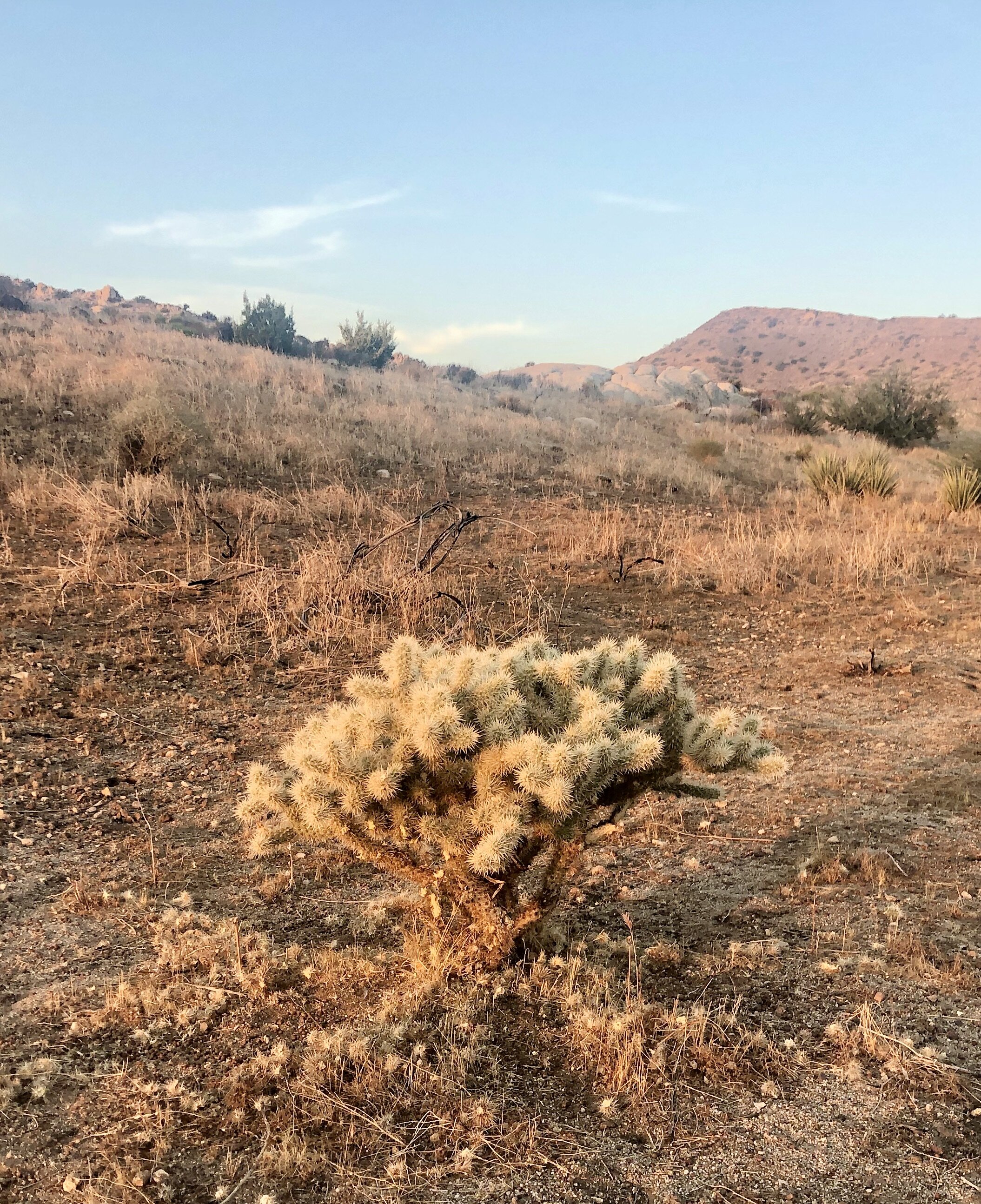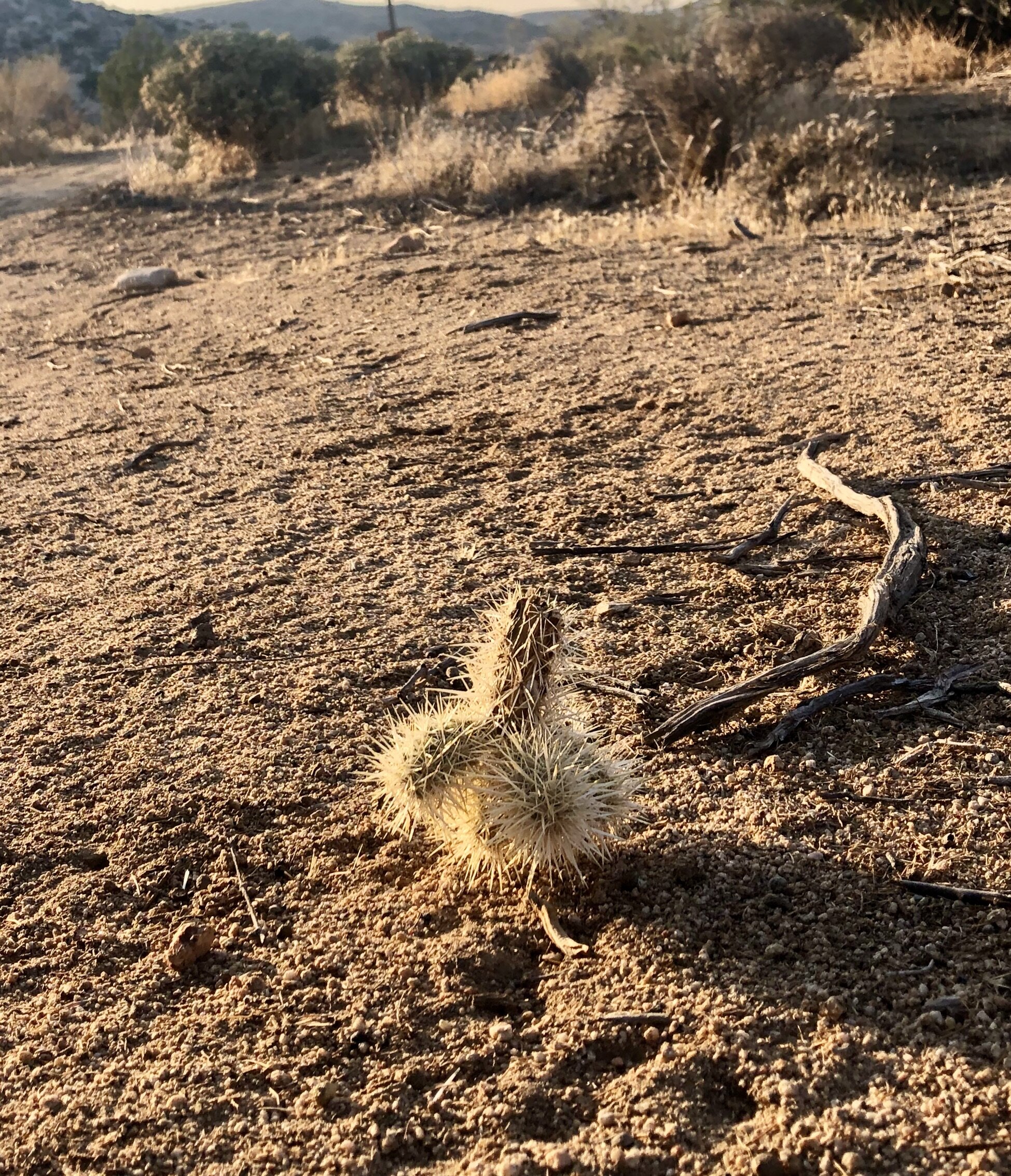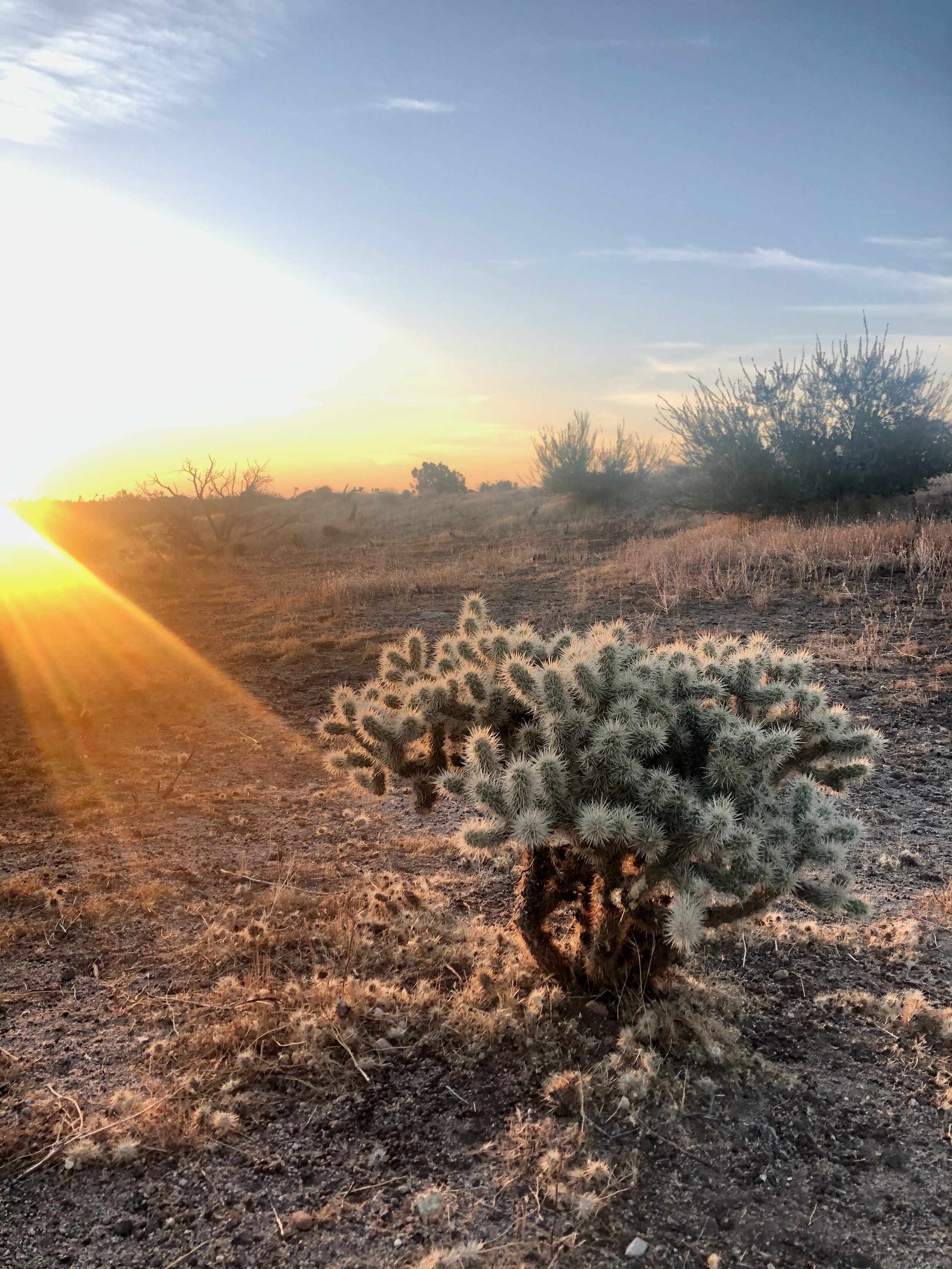The Heart River Blog:
THOUGHTS FROM A SASSY COACH
Cactaceae
I’ve never really been up close and personal with cacti despite all the varieties of cactus that that have shared home lands with me. I’ve never had to worry about a life insurance policy when it comes to my relationship with plants.
In 2017, my partner in making mischief and I went to Joshua Tree for her birthday. We stayed in a modest motel with a slightly sloped floor and a neon green bathroom. Neither are exaggerations. We drove through the park taking in the beautiful and expansive desert. We delighted in the wildflower super bloom, resulting from a rainier fall and winter than usual. Perfect temperatures and visibility for miles. You could see why the area is designated as part of the Basin and Range Province, and you could almost see the line where the Mojave meets the Sonora. Beautiful to say the least. On this fateful day, we visited the Cholla Garden, a concentration of the Teddy Bear (aka Jumping Cholla, aka Murder Bush) Cholla. I couldn’t predict just how acquainted I would become with this cactus.
The Teddy Bear Cholla gets its name from its arms, covered in a thick coat of golden, silver-ish spines, that are tragically and painfully mistaken for soft, teddy bear arms. This plant is not to be reckoned with. Cholla cactus arms are not arms at all, but rather a collection of cylindrical/spherical stems that easily detach from the plant and equally as easily attach to anything walking by. It appears from legend and experience the little pain-pods prefer bare human flesh.
Here’s where things get sticky: The paid pods that comprise most of the cactus are made mostly of tiny spines, many fine and hair like. Each individual spine is covered in a series of overlapping razor-sharp backward barbs similar to a porcupine quill. When they come in contact with human flesh the barbs become embedded in the fibers of the skin and muscle and are nearly impossible to remove. These barbs are strong enough to be able to lift almost a pound of weight. Yes, they will take your flesh with them when they get pulled out. And despite you best effort, many will likely remain with you (in you, let’s be clear).
These demon features serve not only as defense for the plant and the animals that live around it (desert rats gather the death balls around their burrows for protection), but they conserve moisture and provide shade for the apparently sensitive inner parts of the plant. Here’s the other thing: When the pain-pods fall from the plant, they use their barbs to catch a ride with some unwitting, sorry bastard to travel far and away from the original plant as a reproductive strategy. That’s right— this plant has sadistic tendencies when it comes to ensuring its survival. Cholla flowers, like other cactus, and those flowers are pretty, but they bear no fertile seeds. Like some people I know, the cholla reproduces asexually. It reproduces by rotting and rooting.
My first encounter with a cholla started with a pea-sized pod in my ankle, which I pulled—painfully— off with a stick. I had been sticking the lens of my camera in some of the larger, person-sized bushes to get up close and personal with this plant. Looking back, perhaps a conversation about consent was in order. Also looking back, I see why curiosity allegedly killed that cat. Seconds later, cherry-sized pod in the calf. Then two. By the time I got back to the car, I had a collection of pea- to golf-ball sized pods attached to my arm. I was bleeding.
All that stood between me and a painful death was a lesbian with a multi-tool and a first aid kit. Ever since that fateful day, I experience a PTSD-type reaction, a visceral jerk, a vertigo of repulsion whenever I see a cholla cactus. I may swear at it, or offer the one-finger salute. In all cases I avoid this plant with a vengeance, with distaste and a great deal of intense dislike.
Here I am, on my CEO Strategic Planning Retreat in Joshua Tree. Early morning and late evening light invited me to take a walk through the desert to take in the joshua trees, mesquite, juniper and variety of birds. And there is, to my disgust and dismay, the cholla.
How did I know it was there? Because I stepped on it. And once I dug it out of my heel and flung it on the ground with a stick, I promptly stepped on another one. I may have yelled a few expletives at this plant-- an inanimate object incapable of speaking my language and perhaps understanding or caring about my pain, my rage. I think the middle photo above is an accurate description.
Much to my dismay, I’ve become obsessed about cholla. I can’t help but think that when things/situations/people/feelings keep coming back it is for a reason. As Resmaa Menakem discusses in My Grandmother’s Hands, trauma is a body experience and sometimes it gets stuck there. Sometimes we re-experience that trauma in different circumstances, perhaps as a way to give us the opportunity to respond differently to that trauma. Certainly these encounters with a murder bush have challenged my sense of safety in the desert. But what could I do differently?
What if it is how I am being about cholla that is making our relationship problematic? All I know of cholla is that it wants to kill me and painfully. But what if I tried looking at it differently, shifted my thinking (and being)?
As I took my daily walks, I observed cholla from a distance. I had to pay closer attention to where I was walking to avoid stepping on the little pods. I discovered 2 other kinds of cholla. I discovered other small, ground dwelling plants. I discovered bugs. I saw how cholla adds a little something in just the right spot of the desert canvas. To write this, I spent a great deal of time learning about cholla. It really is a pretty cool plant, if you think about how it grows, how it lives, how it functions.
Cholla is generous. Cholla offered me a gift of presence. I saw things because of it I am sure I otherwise never would’ve noticed. I heard things, smelled things, felt things I probably wouldn’t have because of Cholla. Cholla gifted me the experience of intense beauty, gratitude and BEING. That little murder bush gave me life.
Cholla makes me think of resilience. I mean it seems damn resilient to grow specialized leaves that gather water for your nourishment and stab things for your defense. They live in harsh conditions as cold as 0 and as hot as 110. They grow in rocky dry soil with little water. See? Resilient AF. I’m not saying I will go try to hug one (did you even read my story) but I can probably say hello when I walk by. From a healthy distance of course. What in your life might you look at differently?


